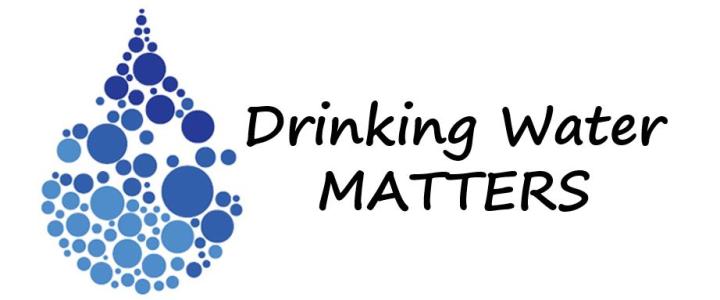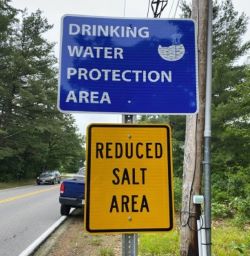
Great Works in Source Water Protection
The Local Source Water Protection Grant Program provides funding for organizations to complete local projects that protect aquifers, lakes and rivers used as local sources of drinking water. Projects from the 2022 grant round were completed this spring and a lot of great work was accomplished by public water systems, municipalities and other partners!
- Manchester Water Works used grant funds to design road improvements on Shore Road to address erosion and stormwater discharge that has been affecting water quality in Lake Massabesic, Manchester’s local drinking water source.
- As part of their effort to reduce sodium chloride (NaCl) in groundwater sources, Merrimack Village Water District placed signs in all of its wellhead protection areas recommending that homeowners and plow operators reduce their winter road salt use.

Merrimack Village Water District reduce salt signs. - Lake Winnipesaukee Association conducted a drainage analysis and hydrologic assessment identifying sediment and nutrient loading to the Langley Brook catchment to determine the sources of erosion and sedimentation threatening the water quality of Paugus Bay, Laconia’s source of drinking water.
- The Town of Waterville Valley and the Gunstock Acres Village Water District both used grant funds to install security fencing around their wells. These security fences will restrict human activity, vandalism and foot traffic around the wells.
- The Town of Londonderry conducted an environmental risk assessment for areas in the town where septic systems are within Source Water Protection Areas for public water supplies. They also developed a municipal electronic tracking system for septic systems, and a public outreach program to educate town residents about septic systems as potential pollutant sources.
- The City of Dover was able to purchase and install three data sondes to collect information about sodium and chloride levels in their drinking water wells. The data will be used to track NaCl trends and target future salt reduction outreach and education.
- Finally, 11 towns worked to improve their local zoning ordinances to protect local drinking water resources.
These examples illustrate how the Local Source Water Protection Grant Program helps communities proactively protect their local drinking water resources.
If you are interested in pursuing a project to help protect drinking water resources in your municipality, please contact NHDES’ Source Water Protection Program for more information about the upcoming 2024 grant round. Applications are due November 1, 2023. More information can be found on the Source Water Protection webpage.




